My spinach plant started to bolt, and I needed to figure out what to do with a ton of fresh spinach. There have also been many other times when I bought a large container of spinach, only for it to wilt. Never fear: because, you can easily freeze spinach - either as leaves or as a puree. Super simple, and takes under 10 minutes! Plus, frozen spinach is really just as good as fresh spinach for most things!
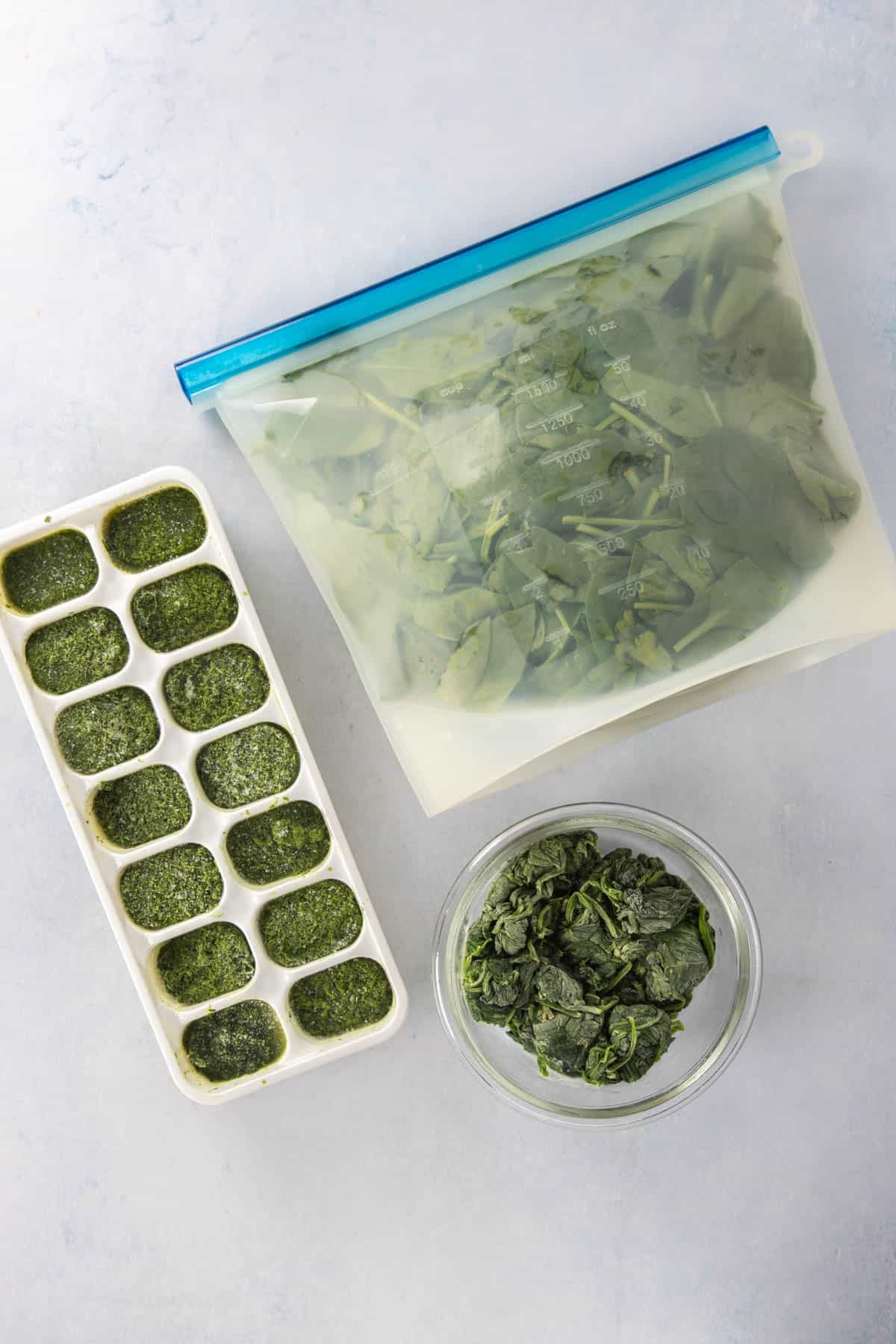
This post contains helpful tips and tricks! If you're in a rush, please use the "Jump to Recipe" below!
📖 How to freeze fresh spinach
Two quick notes before we jump in:
- None of these options work if you want to use spinach in salads (like my fresh spinach avocado salad). Freezing spinach breaks down cellular walls, so it will lose the structure you would want for a salad.
- Always wash and dry spinach leaves thoroughly. Spinach hides a lot of dirt! If you're picking up pre-washed spinach from the supermarket, give it a quick rinse, and you're good to go.
Three Ways to Freeze Spinach
There are three ways to freeze spinach, depending on what you want to use the spinach for.
- If you want to have the leaves still be intact (for instance, to use in soups like this Efo Riro, or in a creamed spinach) then you'll want to freeze the whole spinach leaves.
- If you want to retain the color and have the leaves intact, you can blanch the leaves. Blanching helps prevent enzymatic reactions that lead to decay and discoloration. However, it does reduce the nutrient content a bit (more on that below!) so you could just freeze them straight.
- If you want to use your spinach in smoothies or as a base for recipes, blend it up and freeze the spinach puree!
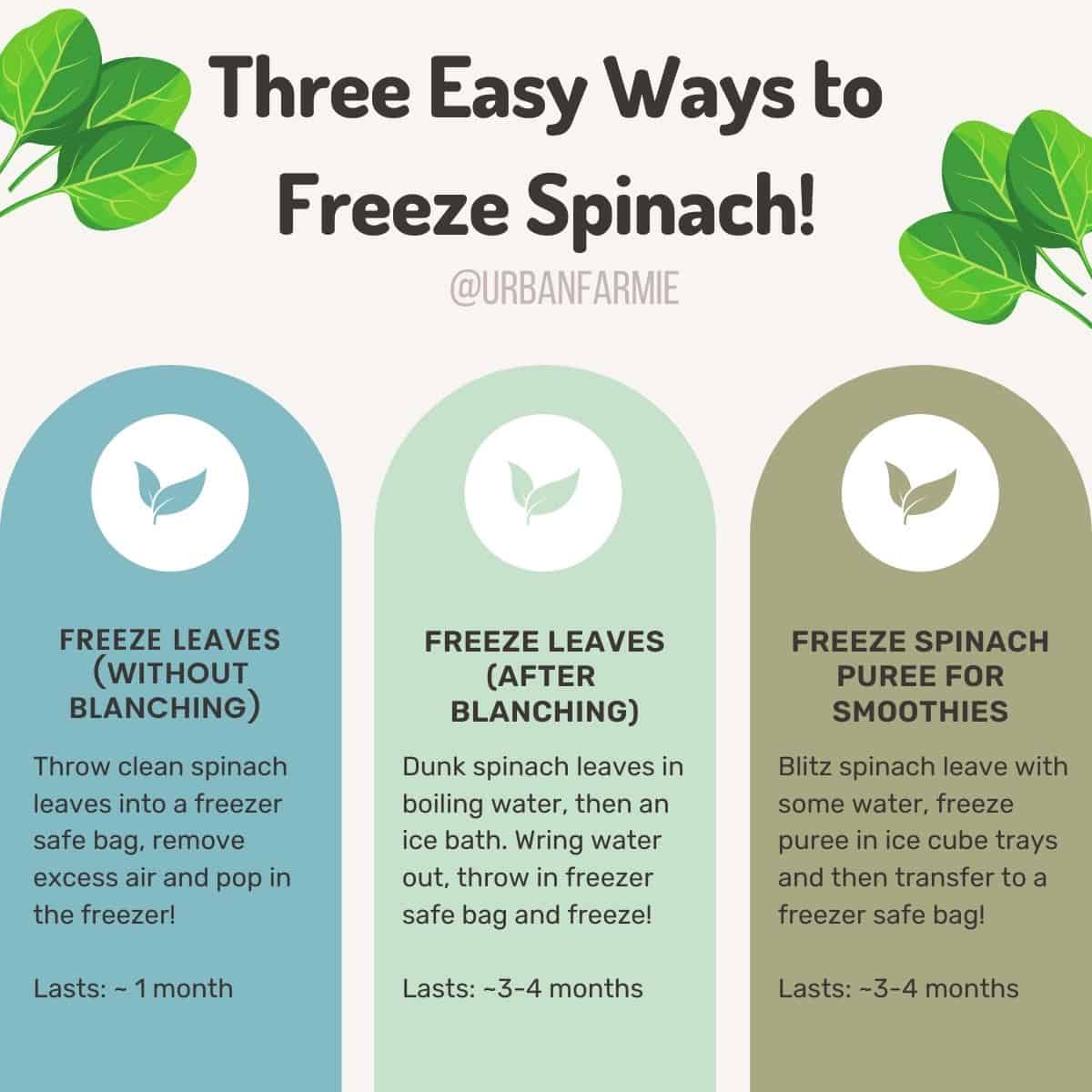
Option 1: Freeze Fresh Spinach Leaves
Rinse your spinach, dry them thoroughly. Pick out any leaves that are already starting to wilt. Place leaves in a freezer safe bag and remove as much air as possible. I love closing it 80% of the way, putting a straw in and sucking out the rest of the air! Throw it in the freezer.
Use spinach within a month if not blanched, or it gets freezer burned.
Option 2: Blanch & Freeze Spinach Leaves
- Add the spinach to a pot of boiling water, fully submerging it for at least 1 to 2 minutes
- Transfer spinach to a bowl with ice cubes. Let it cool down completely for at least 2 to 3 minutes
- Take out all your anger and frustration on the spinach by wringing the water straight out of it, as much as possible
- Portion using measuring jars (so much easier to measure out a cup of spinach ahead of time!) Or store in measured freezer safe containers, and you're done!
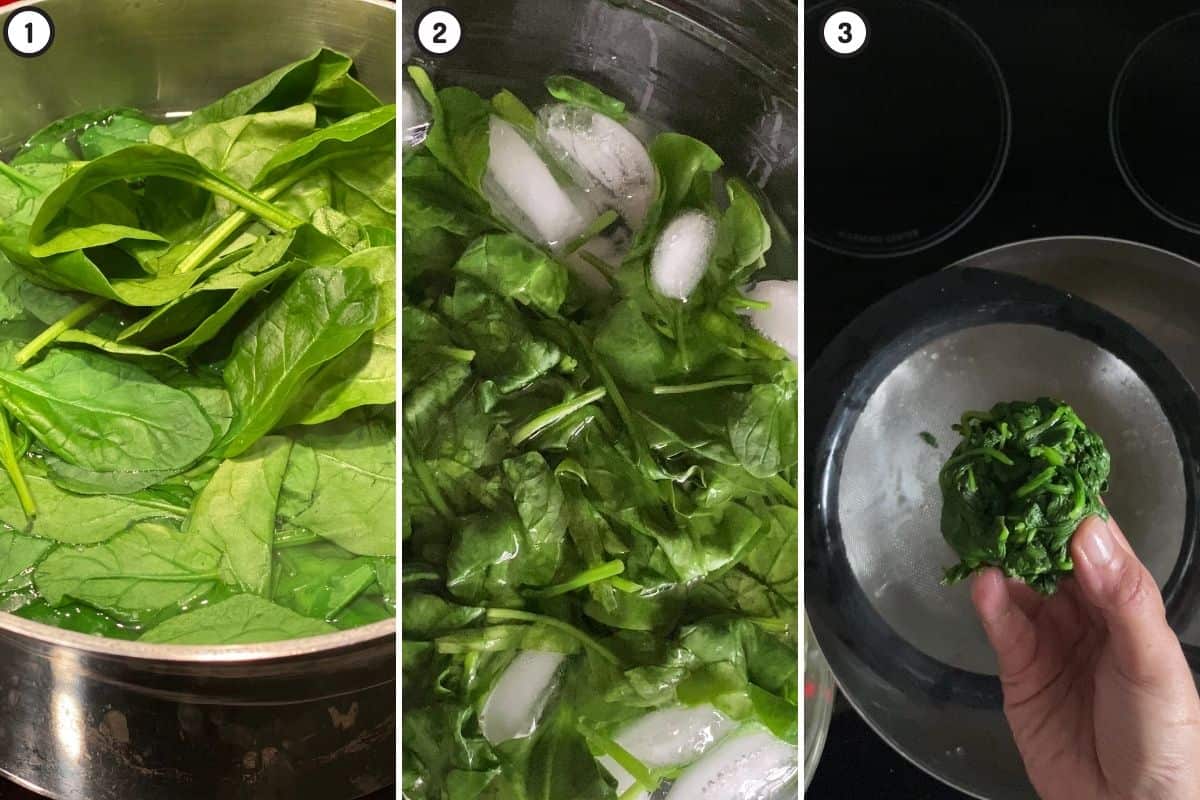
Blanched and frozen spinach can last up 3 to 4 months easily! But I almost always use it up before then.
Option 3: Freeze Spinach Puree
If you want to use frozen spinach in smoothies or as a base, make and freeze spinach puree. To do this, blend your washed and dried fresh spinach leaves along with water. I use about ¼th a cup for 15 oz of spinach. 5-6 oz of spinach will fill up an ice cube tray (or make slightly more than a cup of spinach puree!)
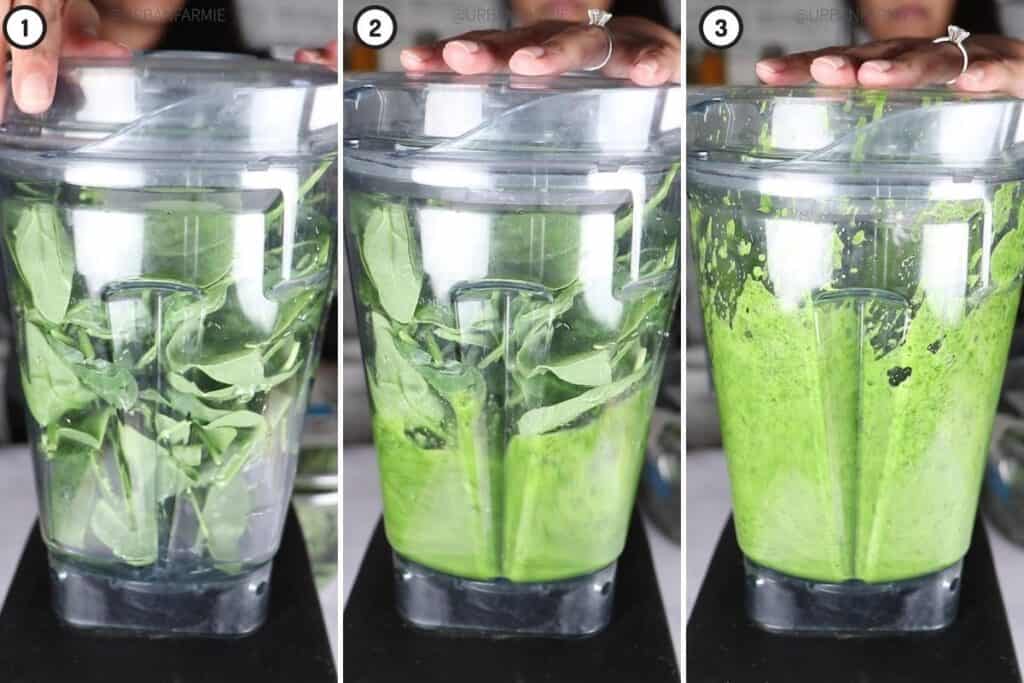
Once blitzed, pour the spinach puree into ice cube containers. Throw it in the freezer for at least 3 to 4 hours for the spinach cubes to set. Then throw cubes in a freezer safe bag, and back in the freezer. Smoothie bombs ready!
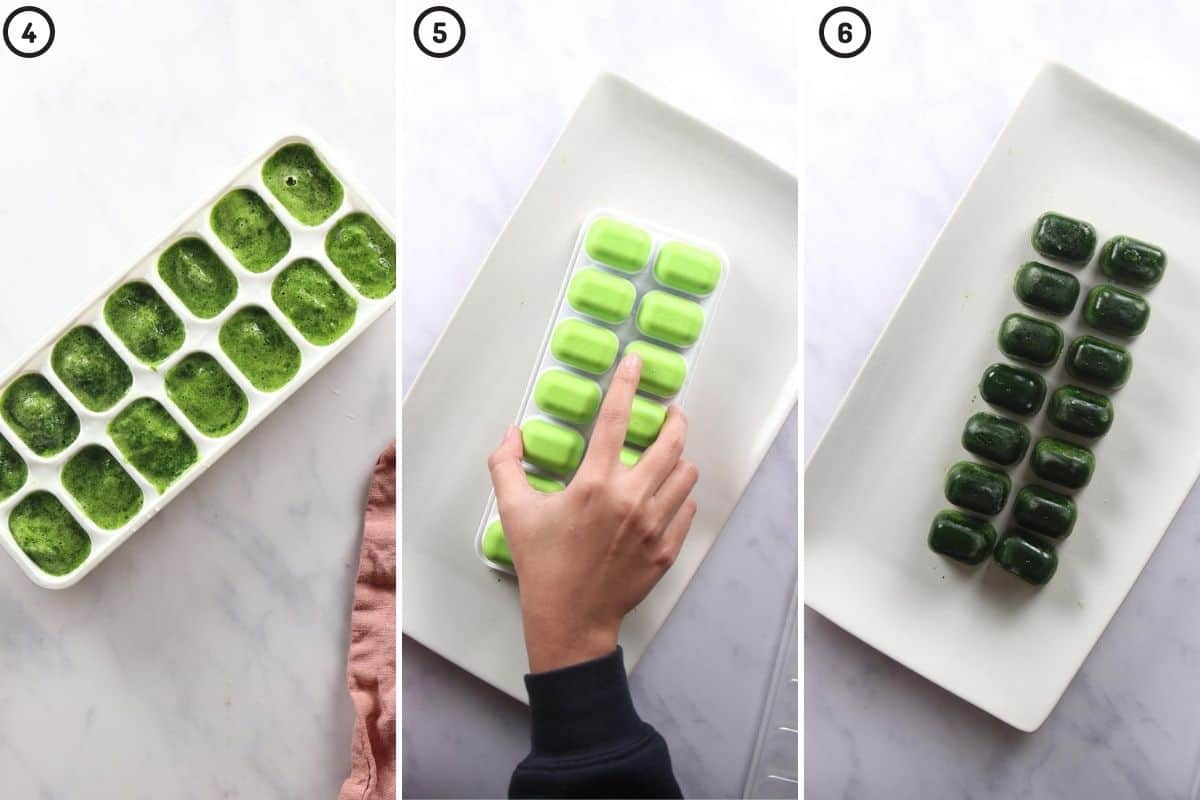
👩🏽🍳Top tips and FAQs
I find that 1 lb of fresh spinach typically produces 1.5 cups of cooked or wilted spinach, so that's 8 to 10 oz of frozen spinach. Conversely, if a recipe calls for a pound of fresh spinach, use about 10 oz of frozen spinach!
You often hear this, and it's somewhat true: cooking spinach tends to remove water soluble vitamins (e.g. Vitamin C). However, that mostly happens when you overcook the spinach. As long as you keep the blanching short, you should be okay!
Blending 5 to 6 oz of spinach (so a typical bag from the super market) with a bit of water reduces to about a cup of spinach puree! This made about 16 ice cubes of a reasonable size and I try to use 1-2 cubes per serving of smoothie!
Typically, about 5 to 6 days. This is why it's a great reason to freeze spinach when you grow a ton in your garden or get a haul for a great rate from the supermarket!
Depends a bit on the form in which you freeze. Blanched spinach leaves and spinach puree / smoothie bombs tend to last for about 3 to 4 months. If you're freezing spinach without blanching, I suggest using it up within a month at most!
Honestly, I never thaw frozen spinach because you can throw it straight into the soup or stew. If you want, you can also thaw it in a microwave or throw it on a skillet on low heat.
Check out these recipes to use your frozen spinach:
If you tried this recipe, don't forget to comment and rate! ⭐⭐⭐⭐⭐
📖 Recipe
Frozen Spinach (How to Freeze Spinach Three Ways!)
Equipment
Ingredients
- 15 oz fresh spinach
- 1 pot water
Instructions
Freezing Spinach Puree
- Add 15 oz of washed and dried spinach to a blender with ¼ cup of water and blend into a puree. Pour puree into an ice cube tray and freeze for at least 3 hours. Remove the ice cubes and pack them into freezer safe bags!
Freezing Spinach Leaves (No Blanching)
- Wash and dry spinach thoroughly. Measure and pack them into a freezer safe bag. Close the bag almost all the way, and then remove any excess air, and then seal the bag. Place in the freezer.
Freezing Spinach Leaves (Blanching)
- Bring a large pot of water to boil. Add the spinach to the water once it's boiling and submerge for around 1-2 minutes. Remove and transfer to an ice bath for 3 to 4 minutes and allow it to cool down complete. Squeeze the excess water out of the spinach thoroughly. Measure out the spinach in cups and then transfer to a freezer safe bag.
Notes
- Blanched spinach leaves and spinach puree / smoothie bombs tend to last for about 3 to 4 months. If you're freezing spinach without blanching, I suggest using it up within a month at most!
- Some people think that cooking strips the spinach of its nutrients - but this isn't fully true! Check the post for details. Blanching helps preserve the taste and color of spinach so if you care about that, blanch it first!


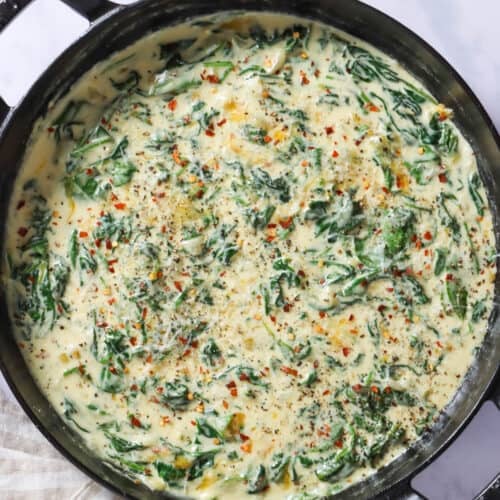
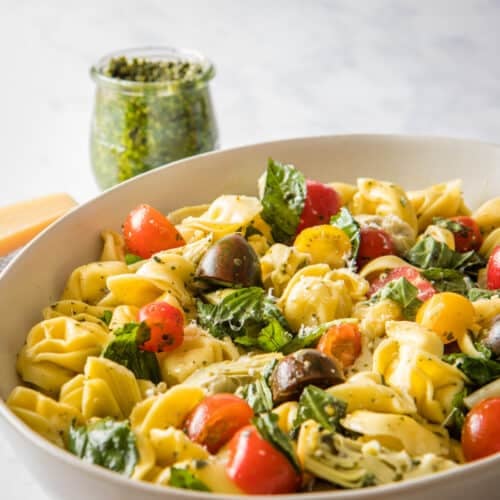
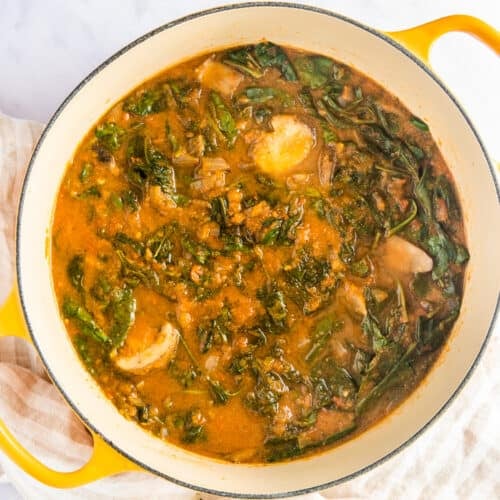

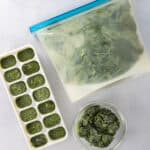








Comments
No Comments